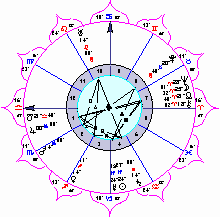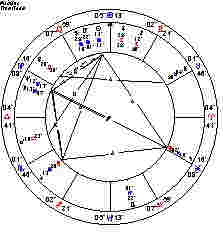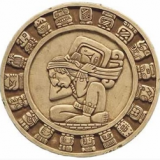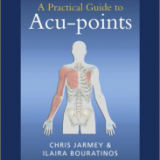The Elements of Astrological Opportunities: Understanding Aspects and Transits
New students to astrology can frighten themselves with harsh aspects and scary transits. This is because a new student must necessarily practice “cookbook” astrology as they’re getting started. Cookbook astrology is the technique of looking through a manual, and reading the interpretation for one specific aspect or transit. For example, an interpretation of Sun square Saturn might read:
“You are often depressed and struggle with many difficulties in life.”
Then you read another aspect, Sun conjunct Jupiter: “You are a cheerful, lucky individual and may sometimes overextend yourself.”
Both of these interpretations are essentially correct, but how in the world can they describe the same person? Because we’re looking at human beings, messy, complicated and wondrous, we just don’t fit into neat little slots. These manuals are very useful, giving us the opportunity to get a feel for the different planetary energies and how they work together. The next step in interpretation after the manual, is synthesis. Synthesis is the act (and art) of putting together the various way that planetary interactions occur and making a whole picture of them. This is where you “see” the picture of the person, event or question in the chart.
Synthesis can be taught. Every astrologer will do this a bit differently, and will have their own means of perceiving. For me, the chart is a rich painting, filled with shadings, layers and textures. A layer might be a planetary configuration such as a bucket pattern. A texture could consist of the house placements involved and the signs would be shadings of color. This is my particular visualization, and others may operate differently. However, the astrological synthesist is able to assemble in some way, the various planetary factors in order to interpret some part of a human being’s life.
The best way to learn synthesis that I know of, is to study a variety of charts of well-known people. Go ahead and look up their aspects in your book. Notice how these aspects were modified in real life, and see if you can understand why, astrologically. This may involve researching a variety of astrological texts, to gain other astrologer’s insights into the workings of a particular planet or aspect. There are plenty of cookbooks out there and they can all add something to your understanding.
My experience has shown that the more grounded in the basics the astrologer is, the better the interpretation. This simply means a thorough comprehension of planets, sign, houses, qualities, and aspects. There really are a finite number of these and they are less difficult to memorize than the multiplication tables (a lot less difficult). Communicate with other astrologers. Ask questions. There are plenty of forums on the web for astrological discussions, and most cities have an astrological group of some kind that you can get involved with. Astrologers are, for the most part, friendly people and won’t bite. You might be amazed at some of their parties! Discussion of chart elements is a favorite topic, and you’ll get used to whipping out your ephemeris at a moment’s notice.
Frequently, the so-called “negative” aspects and transits can be translated into positive ones. Sometimes it takes no effort at all. For example, I have a very strong Mars and Uranus. These two in combination or even singly in aspect to other planets could imply danger. However, I’ve lived with these all my life and am well accustomed to dealing with their effects. This means that if an uncomfortable transit comes along involving either of these that’s probably the worst it will be, uncomfortable. For someone whose Mars and Uranus aren’t as prominent, we might want to advise against dark streets, driving, etc.
I have learned to take any powerful transit as an opportunity for growth, even the very harsh ones. For example, Saturn will soon be coming up to square Neptune. This is traditionally known as a “depression” aspect. What I like to do, is to look at the highest expression of these planetary energies and consciously “work them”, (this is what I advise clients to do as well). The higher expression of Saturn includes self-discipline, knowing your personal direction, and being an authority. Neptune is our mystical sense, artistic and devotional. (I’m cheating here because I have them conjunct and have had plenty of practice). This gives us the opportunity to discover and reveal our personal gifts to the world, knowing what we’re capable of and being willing to share it. We can be grounded and centered with our talents while still being able to share the beauty. Since it’s a square, we can realize that this is a learning experience and be willing to make a few mistakes and adjustments along the way.
The subjective experience of this transit for the unprepared could be a sense of worthlessness, feeling that the struggle isn’t worth it and perhaps just wanting to end it all. There’s a big difference between using a transit and being used by it, as you can see.
In my opinion, every difficult aspect or transit can be improved upon in our expression of it, and as astrologers, we have the opportunity to do so. We are still human and the forces which the planetary bodies represent are big, so we may not always be perfectly successful. However, the opportunities exist for greater wholeness with each “close encounter” with a significant energy and we can take advantage of this.








